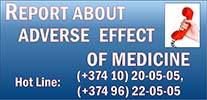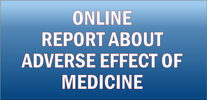
One of the basic principles of national drug policy is the provision of physical and economic availability of medi- cines.
Despite the fact that there is a wide assortment of medicines in the pharmaceutical market, today, even the advanced countries often are not capable to provide the population with all necessary medicines. Therefore the concept of using a limited number of medicines, that are called essential medicines, has taken its roots in numerous countries.
One of the basic principles of national drug policy is the provision of physical and economic availability of medicines.
Despite the fact that there is a wide assortment of medicines in the pharmaceutical market, today, even the advanced countries often are not capable to provide the population with all necessary medicines. Therefore the concept of using a limited number of medicines, that are called essential medicines, has taken its roots in numerous countries.
Essential are those medicines which satisfy the main health care needs of the population, therefore they are intended to be available within the context of functioning health systems at all times in adequate amounts, in the appropriate dosage forms. In 1977 WHO has expanded its activity in pharmaceutical sector and has concentrated it on the concept of essential medicines, therefore the first Model List of Essential Medicines was developed; nowadays this concept is spread out in many countries of the world (about 160).
The National List of Essential Medicines is developed considering WHO recommendations and according to the Model List of Essential Medicines. The leading health care professionals of the countries are involved in the development of the national lists.
In the process of selecting the essential medicines the following factors are taken into consideration:
-
efficacy and safety of medicines,
-
financial availability of medicines,
-
morbidity and mortality rate in the country,
-
structure of the prevalence diseases,
-
economic, genetic and demographic parameters,
-
structure of health care institutions,
-
experience and level of education of the health care professionals.
Only generic names of medicines are used in the List.
The majority of the essential medicines must contain only one active ingredient. The combined medicines can be included only if a certain medicine has an evident advantage over the monocomponent one with its efficacy and safety.
The concept of the essential medicines does not exclude the opportunity of the usage of other medicines, but only concentrates the attention of the professionals and government particularly on these medicines and directs governmental financial resources to providing the population with these medicines.
The List of Essential Medicines is used during the following activities:
1. Development of the national standard treatment guidelines (STG). National Lists of Essential Medicines usually closely relate to national guidelines for clinical health care practice. In many countries EML is formed on the basis of the national STG.
2. State purchase and distribution of medicines. The state purchased medicines that are distributed to patients free-of-charge are mostly to be included in EML.
3. For the purpose of forming the list of medicines applied for Donation management EML is to be taken into consideration.
4. Formation of the list of medicines that are to be reimbursed by the state. The free or preferential ambulatory treatment is carried out within EML.
National Formulary, which contains a brief pharmaco-therapeutical characteristics of all essential medicines, is the main tool of implementation of the essential medicines concept.
According to the «Law on medicines» of RА, the country must be provided with all medicines from National List of Essential Medicines. Therefore a priority registration is held for the essential medicines.
The implementation of the Essential Medicines concept can help countries to increase the quality of health care and rationalize the process of purchase and distribution of medicines, thereby reducing costs to the health system.
The first List of Essential Medicines in Armenia was authorized in 1994. It is periodically updated.





